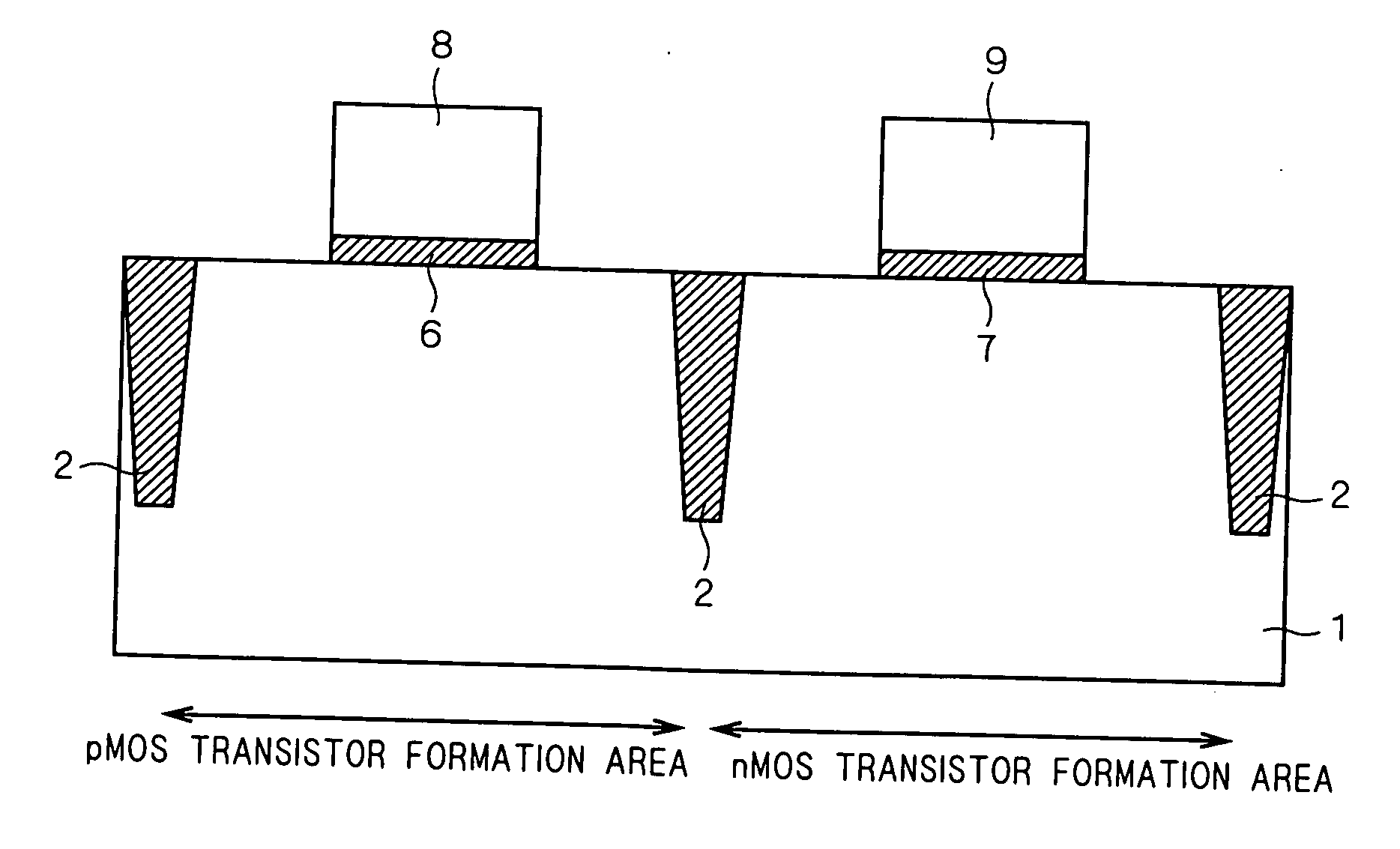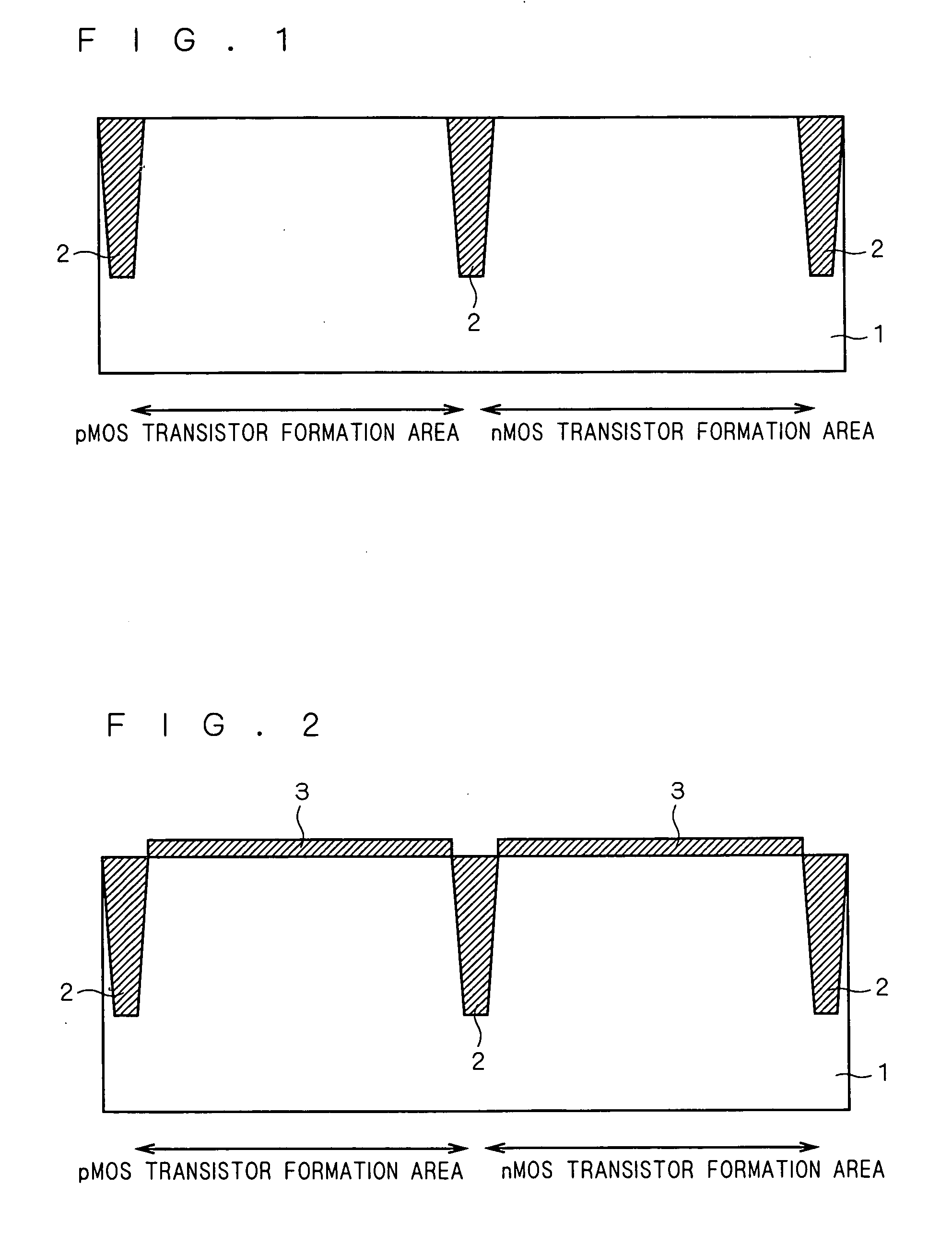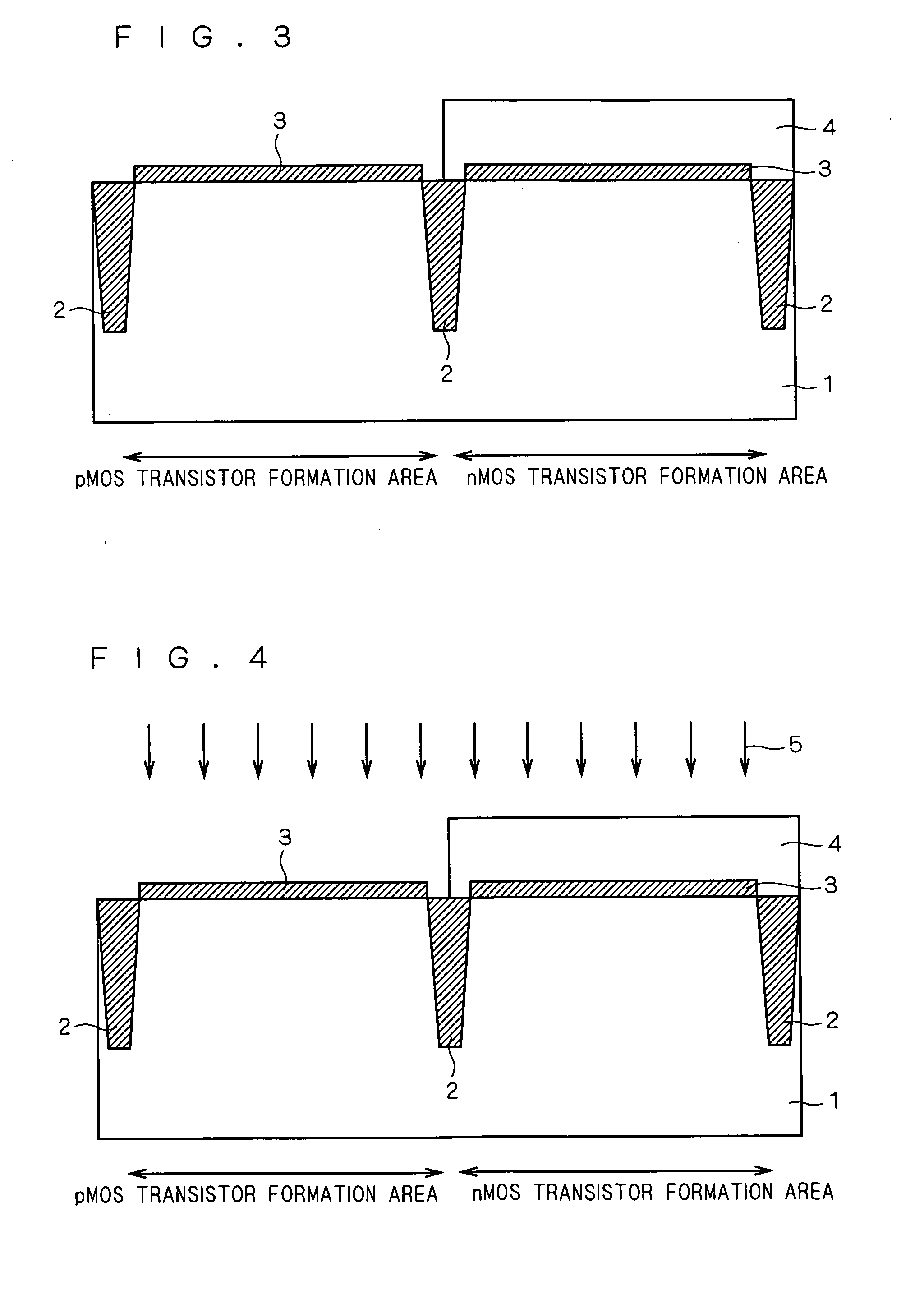Manufacturing method of CMOS type semiconductor device, and CMOS type semiconductor device
a manufacturing method and semiconductor technology, applied in the direction of semiconductor devices, basic electric elements, electrical equipment, etc., can solve the problems of deteriorating nbti performance, enhanced boron penetration from a gate electrode to a silicon substrate, adverse effect of boron penetration on the performance of a pmos transistor, etc., to achieve the effect of improving the life of the nbti and enhancing the boron penetration
- Summary
- Abstract
- Description
- Claims
- Application Information
AI Technical Summary
Benefits of technology
Problems solved by technology
Method used
Image
Examples
embodiment 1
[0039] The manufacturing method of the CMOS type semiconductor device concerning this embodiment is concretely explained using process step sectional views.
[0040] First, as shown in FIG. 1, semiconductor substrate 1 which has a pMOS transistor formation area and an nMOS transistor formation area is prepared. Here, semiconductor substrate 1 is a p-type silicon substrate. Substrate of other types, such as n-type silicon or silicon on insulator (SOI) etc., can be used.
[0041] Next, as shown in FIG. 1, isolation 2 is formed in the surface of semiconductor substrate 1. A pMOS transistor formation area and an nMOS transistor formation area are electrically separated by the isolation 2 concerned. Here, the isolation 2 concerned can be formed by enforcing the shallow trench element isolation method, for example.
[0042] Next, n well (not shown) is formed to semiconductor substrate 1 of the pMOS transistor formation area. Further, p well (not shown) is formed to semiconductor substrate 1 of ...
embodiment 2
[0116] In Embodiment 1, reference was made about the case where only high-speed logic circuits are formed on a semiconductor substrate (that is, when forming the gate insulating film of one kind of thickness on a semiconductor substrate) for simplification of explanation.
[0117] However, generally as for the present leading edge semiconductor integrated circuit, two or more kinds of gate insulating films with which thickness differs are formed on a semiconductor substrate. For example, it is a case where it forms digital circuits which comprise high-speed logic circuits and input output circuits, a case where analog circuits are also formed besides digital circuits, etc.
[0118] In the above-mentioned exemplification, since high-speed operation is required, the gate insulating film of each MOS transistor of high-speed logic circuits is comparatively thin, and the thickness of the gate insulating film of the MOS transistors which forms the other circuits (input output circuit etc.) is...
embodiment 3
[0159] In this embodiment, the present invention (technology concretely concerning Embodiment 1) is applied in manufacture of the semiconductor device which has an MOS structure shown below.
[0160] Here, as for the above-mentioned MOS structure, a gate insulating film includes a high dielectric constant film. In the high dielectric constant film concerned, the oxide of one of metallic elements is contained, for example among metallic elements, such as Hf, Al, Zr, and La.
[0161] Thus, a high dielectric constant film is formed for the lowering of power consumption (suppression of leakage current) of the MOS transistor.
[0162] Hereafter, the manufacturing method concerning this embodiment is concretely explained using process step sectional views. Also in this embodiment, it explains as an example like Embodiment 2 bearing in mind manufacture of the digital type semiconductor integrated circuits with which high-speed logic circuits and input output circuits are formed on a semiconducto...
PUM
 Login to View More
Login to View More Abstract
Description
Claims
Application Information
 Login to View More
Login to View More - R&D
- Intellectual Property
- Life Sciences
- Materials
- Tech Scout
- Unparalleled Data Quality
- Higher Quality Content
- 60% Fewer Hallucinations
Browse by: Latest US Patents, China's latest patents, Technical Efficacy Thesaurus, Application Domain, Technology Topic, Popular Technical Reports.
© 2025 PatSnap. All rights reserved.Legal|Privacy policy|Modern Slavery Act Transparency Statement|Sitemap|About US| Contact US: help@patsnap.com



